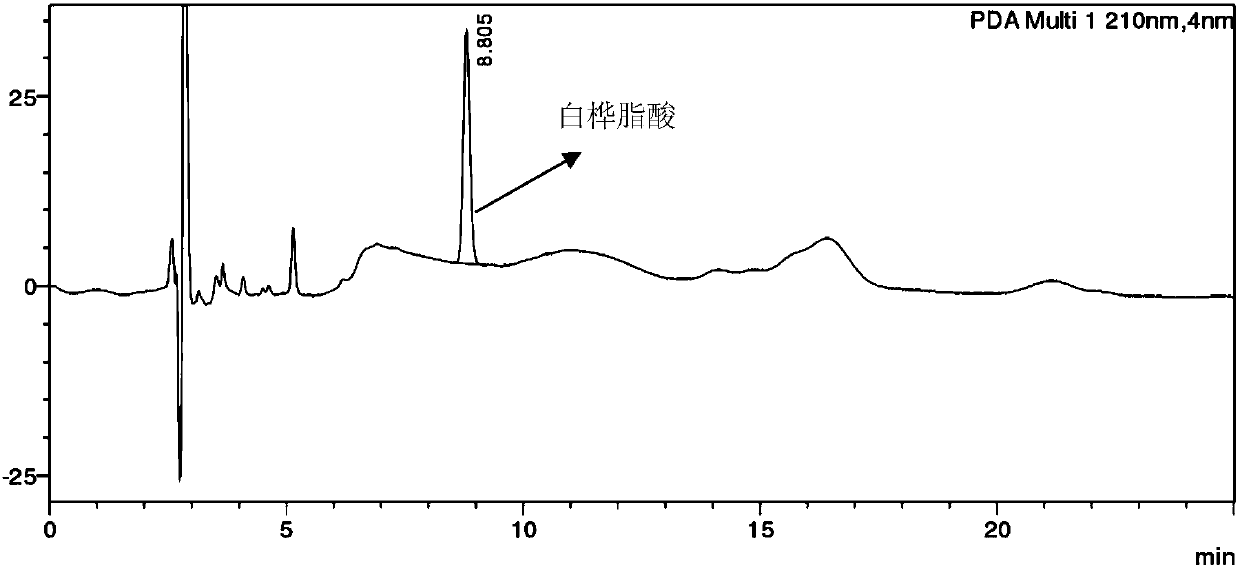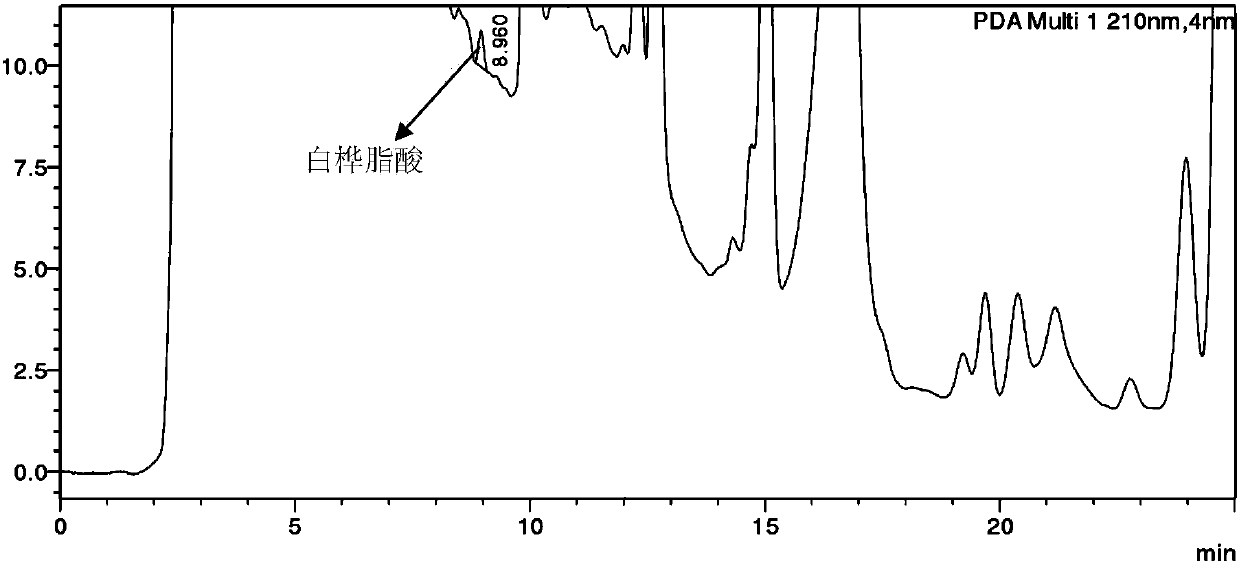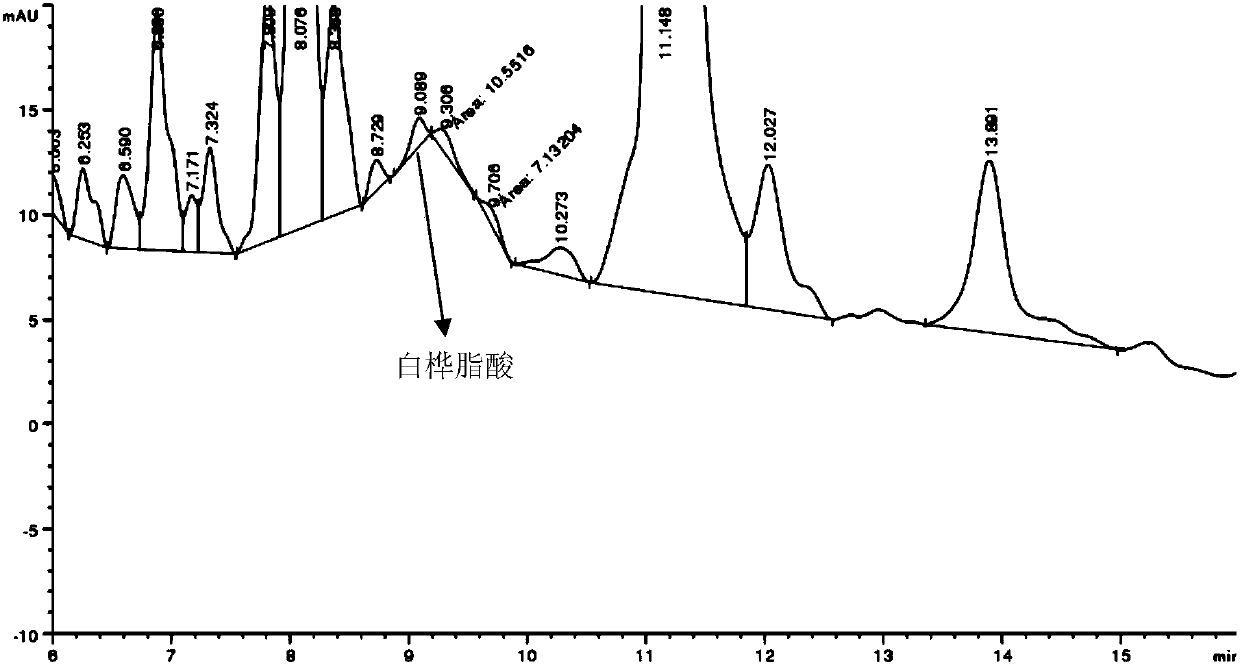Method for extracting triterpene substances from inonotus obliquus by use of quorum sensing molecules induction
A technology of quorum sensing and Inonotus obliquus, which is applied in the field of microbial fermentation and metabolism, to achieve the effect of promoting production and improving
- Summary
- Abstract
- Description
- Claims
- Application Information
AI Technical Summary
Problems solved by technology
Method used
Image
Examples
Embodiment 1
[0044] 1. Preparation of solid medium
[0045] The bran is added into water according to the concentration of 5% by mass, and after boiling for 0.5 hour, remove the large particles by filtering with eight layers of gauze to obtain the bran water extract; then add PDA synthetic medium (commercially available), after mixing evenly, the After boiling, it was divided into glass tubes, 10 mL per tube, and then sterilized at 121 ° C for 20 min. After sterilizing, turn the inclined surface until the inclined surface solidifies.
[0046] Wherein, the mass percentage of raw materials is composed of: 1% of potato extract powder, 2% of glucose, 1.8% of agar, 0.01% of chloramphenicol, and the balance is bran water extract.
[0047] 2. Activation of bacteria
[0048] Inonotus obliquus CFCC 83414 was inoculated on the slope, and cultured in an incubator at 25°C for about 15 days until it covered the entire slope.
[0049] 3. Preparation of liquid medium
[0050] The bran is added into w...
Embodiment 2
[0078] Referring to the fermentation process of Inonotus obliquus in Example 1, in the stage of adding farnesol, 10 μL of 1M farnesol working solution was added to each bottle, so that the concentration of farnesol in the fermentation broth was 100 μM. Other conditions are with embodiment 1.
[0079] The detection method of triterpenes and betulinic acid concentration is the same as that in Example 1.
[0080] In the experimental group, farnesol was added in the middle stage of fermentation, and in the control group, DMSO with the same concentration was added. The measurement results showed that the contents of triterpenoids in the freeze-dried cells of the control group and the experimental group added with farnesol were 13.402 and 14.949 mg / g, and the contents of betulinic acid were 4.0265 and 3.2706 μg / g respectively; The contents of triterpenoids in the fermentation broth of the experimental group and the experimental group were 14.225 and 11.473mg / 100mL, and the contents...
Embodiment 3
[0082] Referring to the fermentation process of Inonotus obliquus in Example 1, in the stage of adding farnesol, 15 μL of 1M farnesol working solution was added to each bottle, so that the concentration of farnesol in the fermentation broth was 150 μM. Other conditions are with embodiment 1.
[0083] The detection method of triterpenes and betulinic acid concentration is the same as that in Example 1.
[0084] In the experimental group, farnesol was added in the middle stage of fermentation, and in the control group, DMSO with the same concentration was added. The measurement results showed that the contents of triterpenoids in the freeze-dried cells of the control group and the experimental group added with farnesol were 13.402 and 15.545mg / g, and the contents of betulinic acid were 4.0265 and 13.7273μg / g respectively; The contents of triterpenoids in the fermentation broth of the experimental group and the experimental group were 14.225 and 10.426mg / 100mL, and the contents ...
PUM
 Login to View More
Login to View More Abstract
Description
Claims
Application Information
 Login to View More
Login to View More - R&D
- Intellectual Property
- Life Sciences
- Materials
- Tech Scout
- Unparalleled Data Quality
- Higher Quality Content
- 60% Fewer Hallucinations
Browse by: Latest US Patents, China's latest patents, Technical Efficacy Thesaurus, Application Domain, Technology Topic, Popular Technical Reports.
© 2025 PatSnap. All rights reserved.Legal|Privacy policy|Modern Slavery Act Transparency Statement|Sitemap|About US| Contact US: help@patsnap.com



